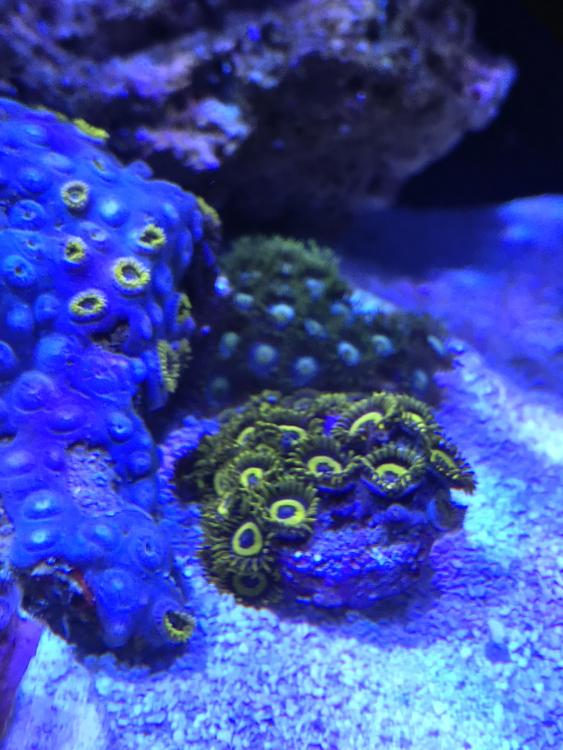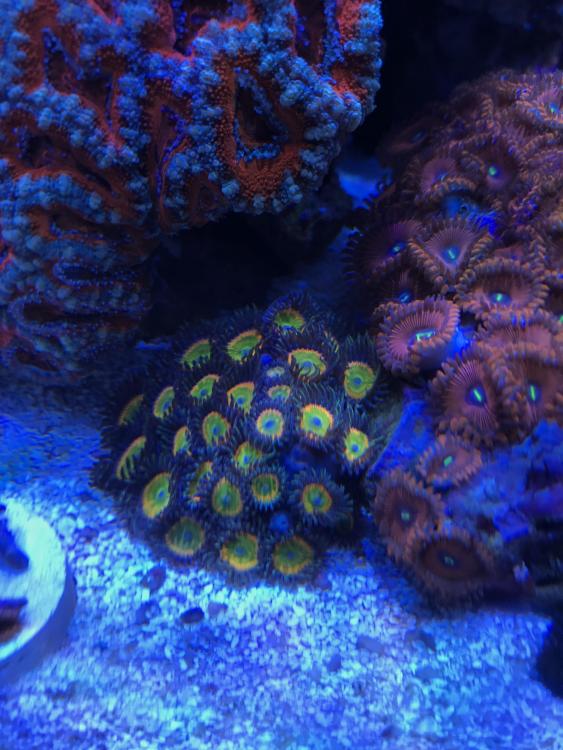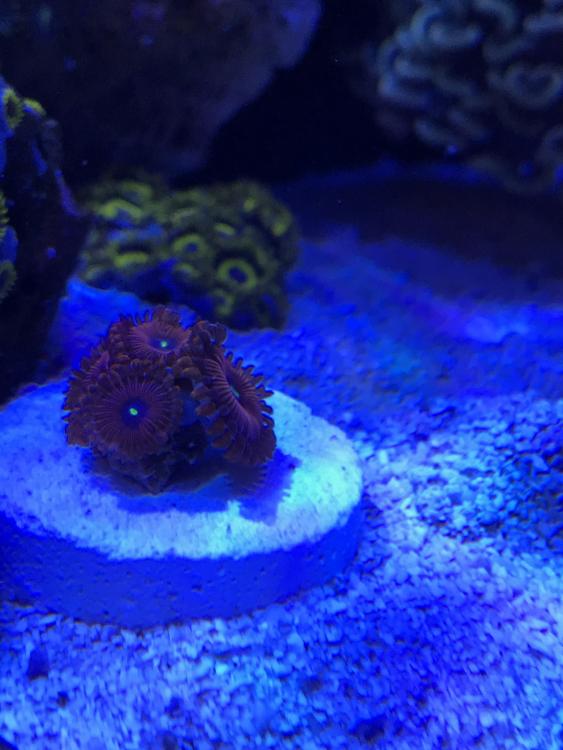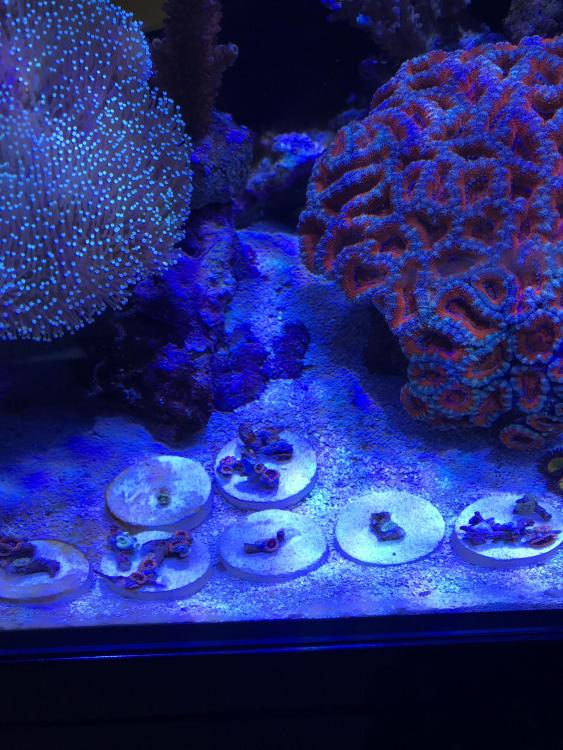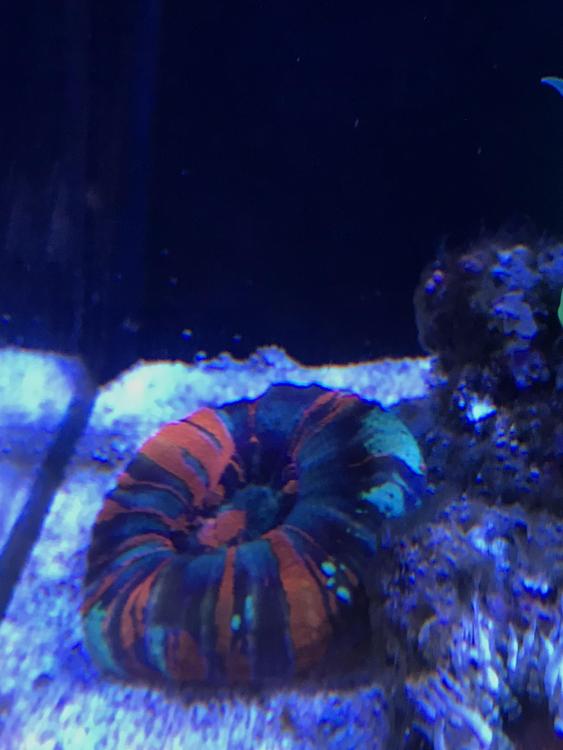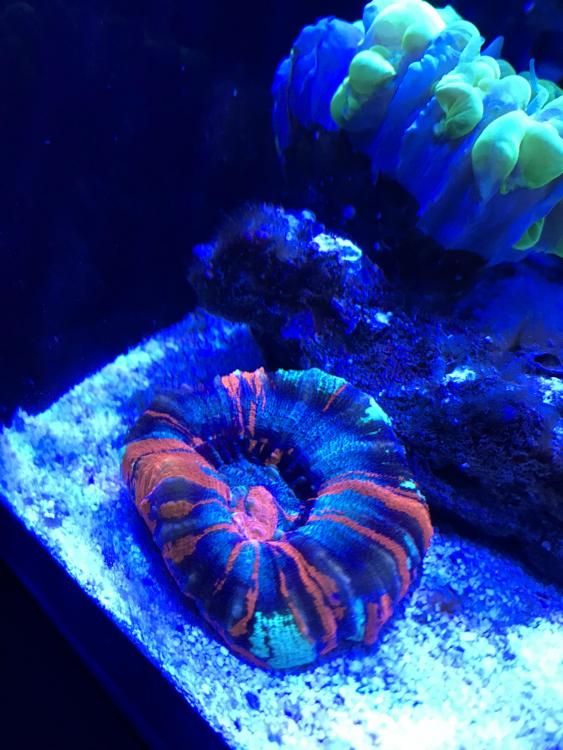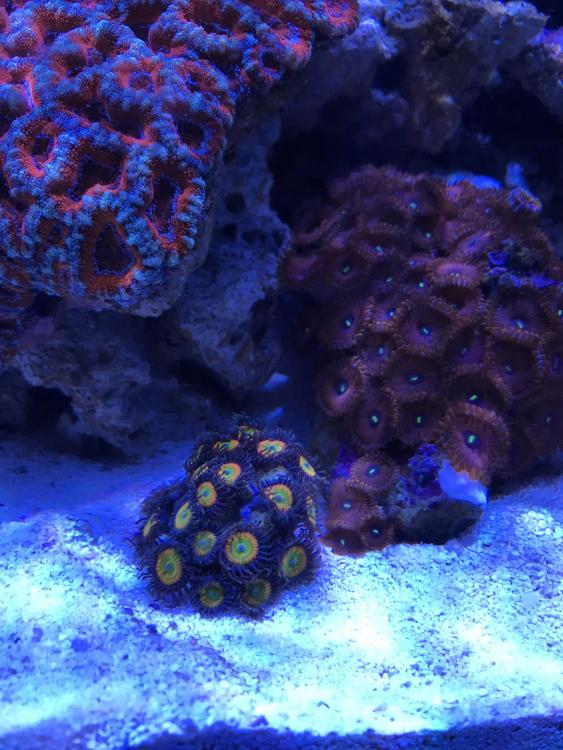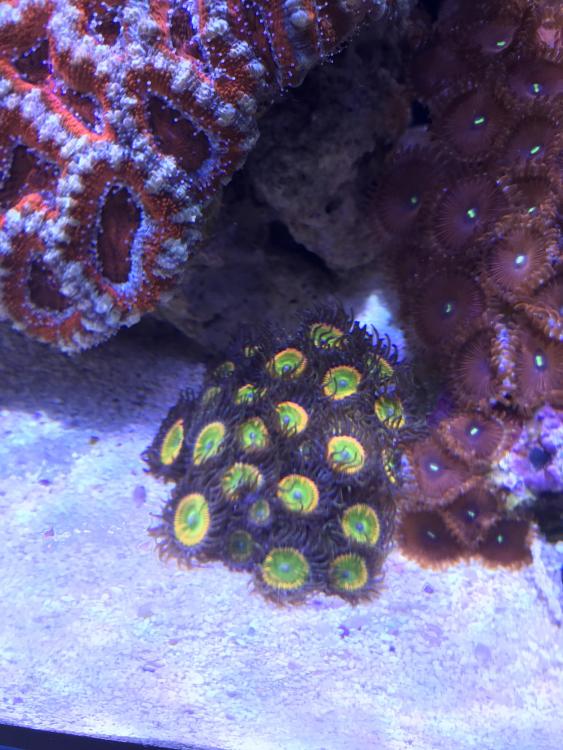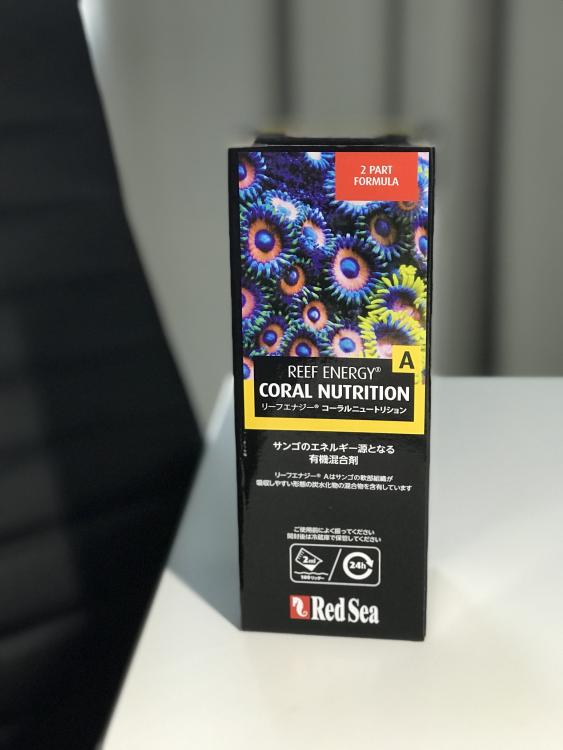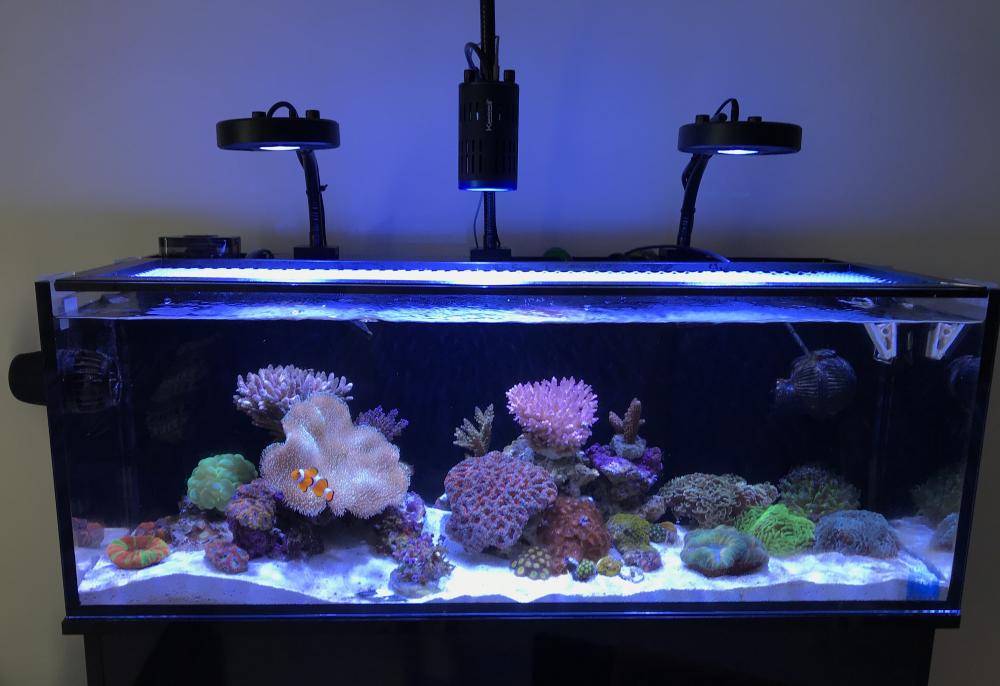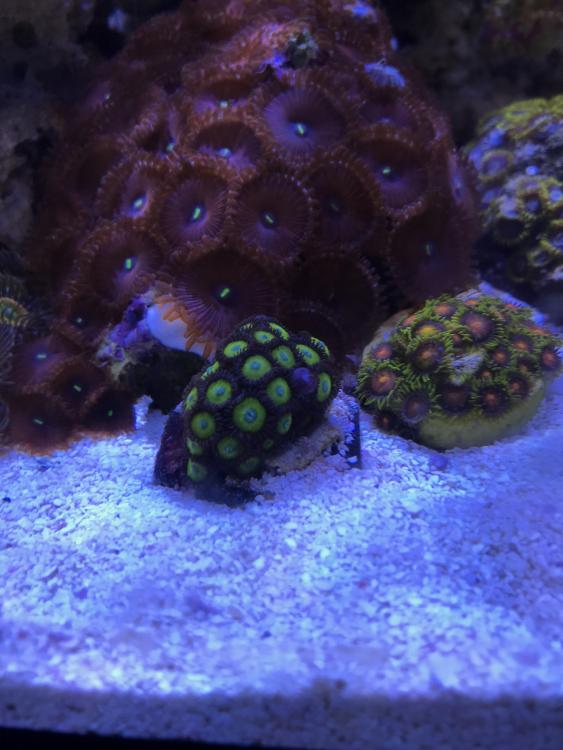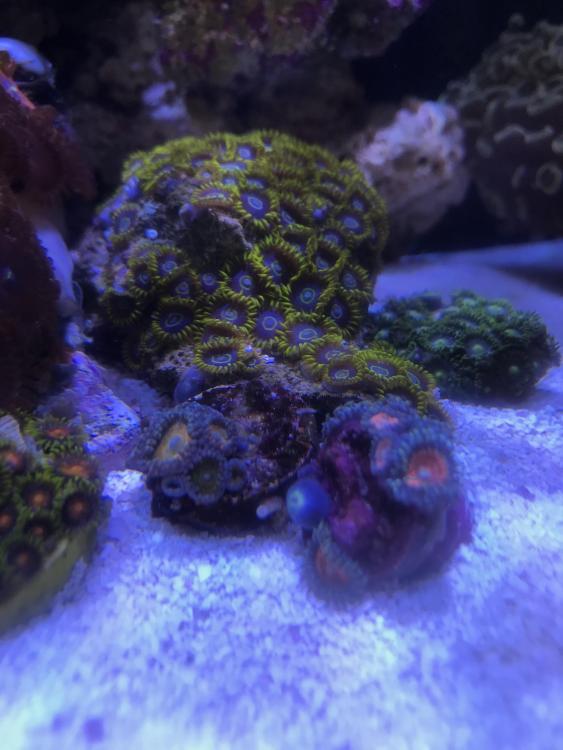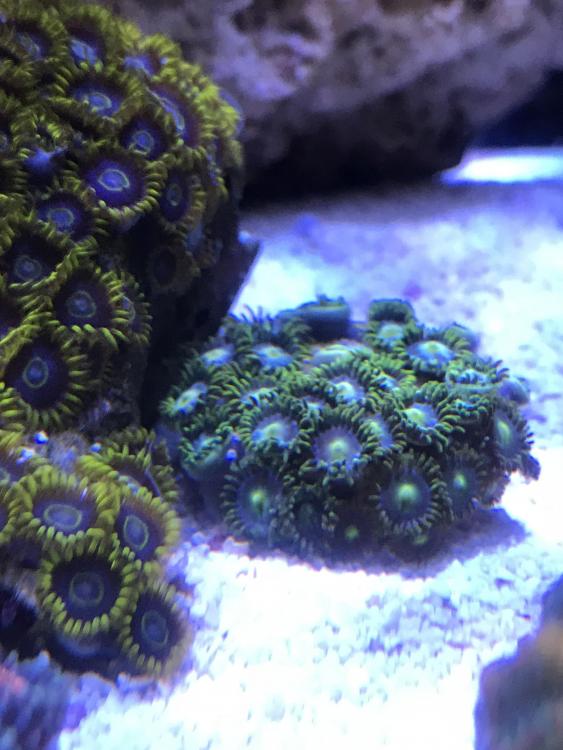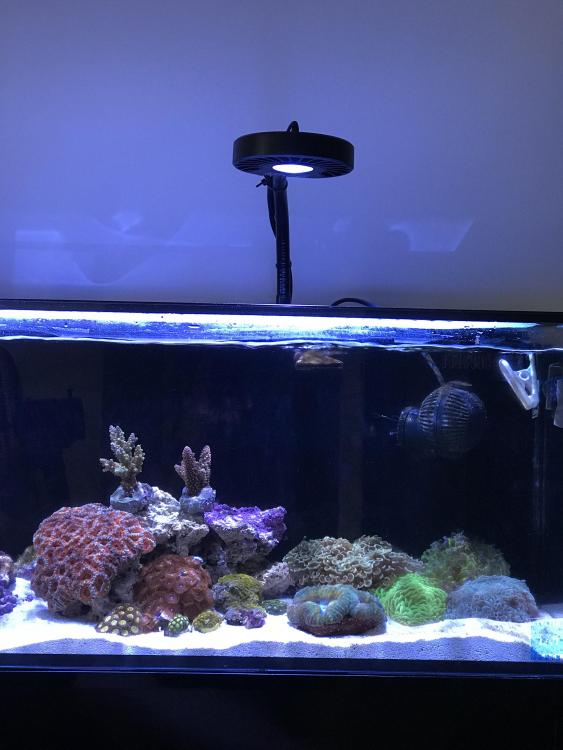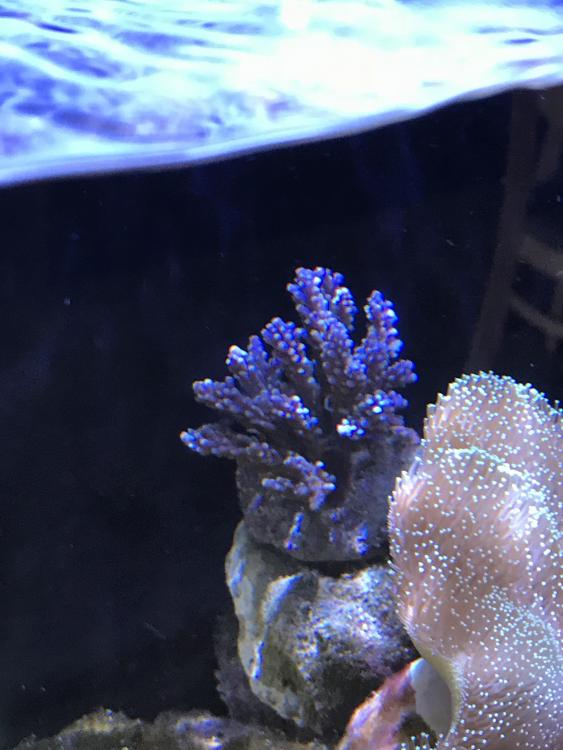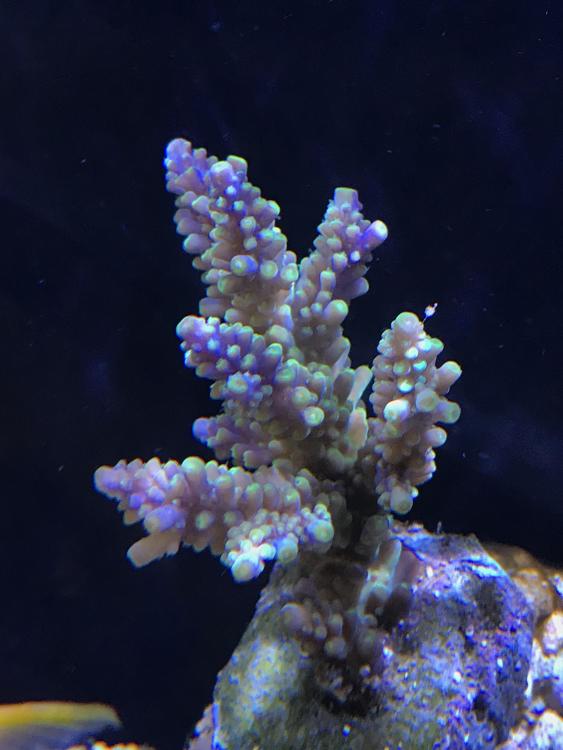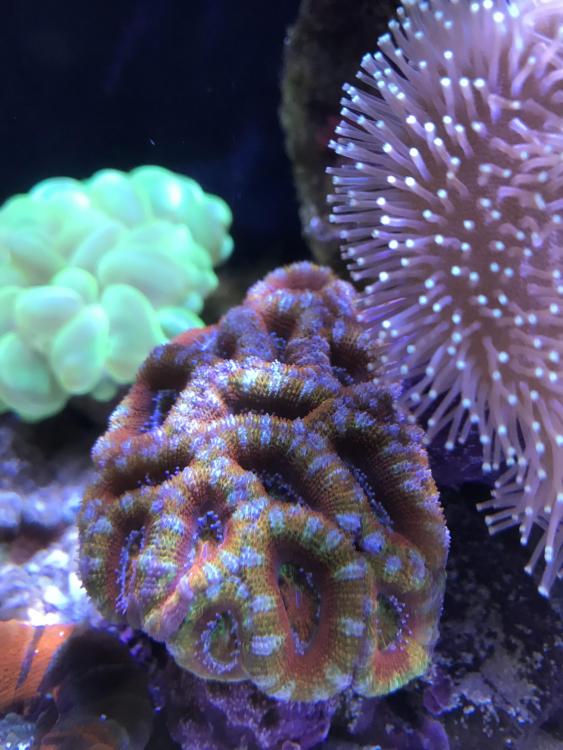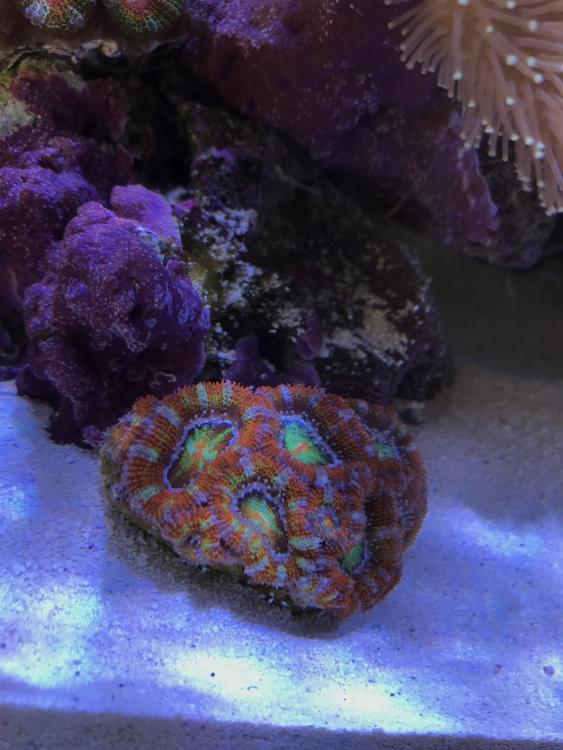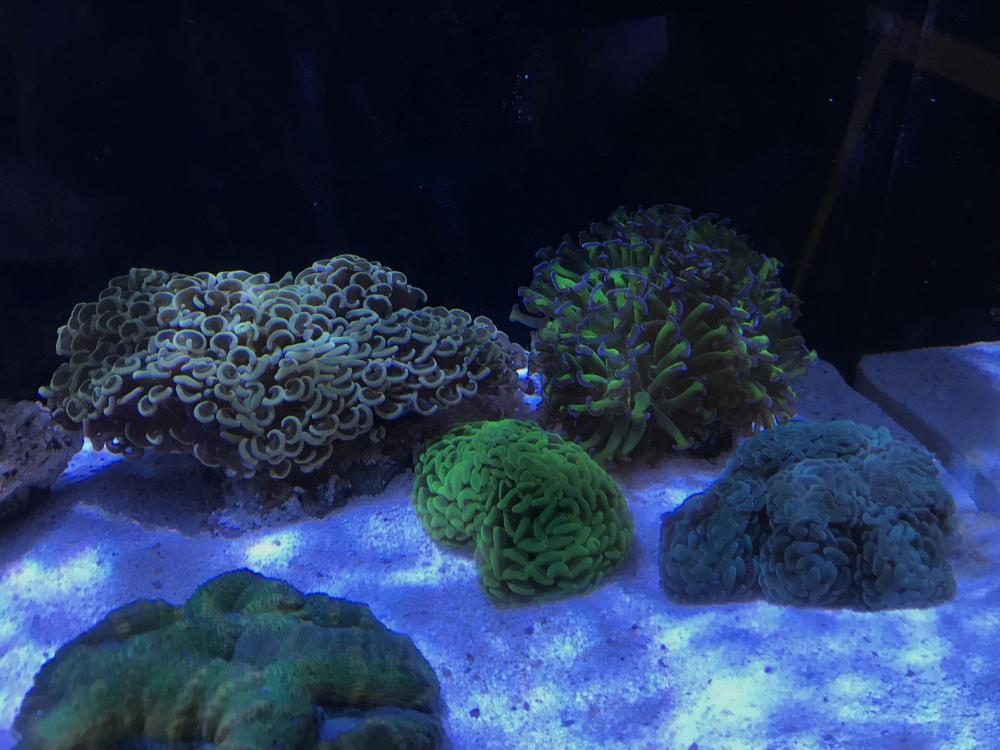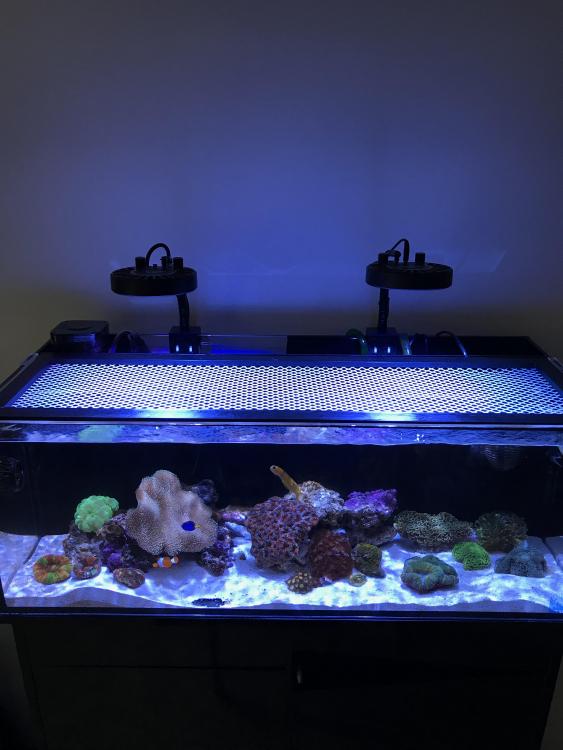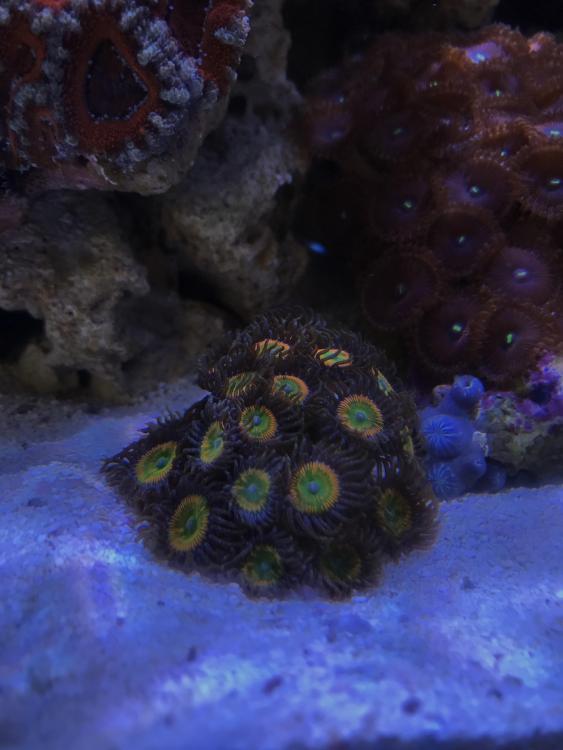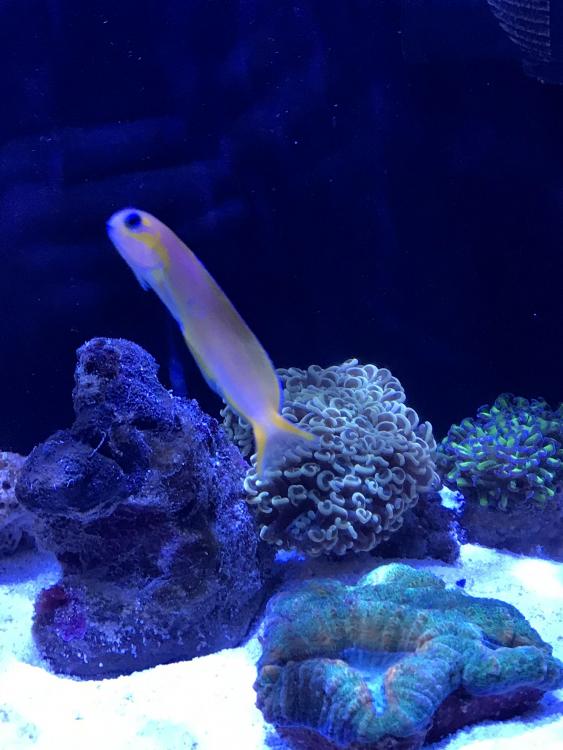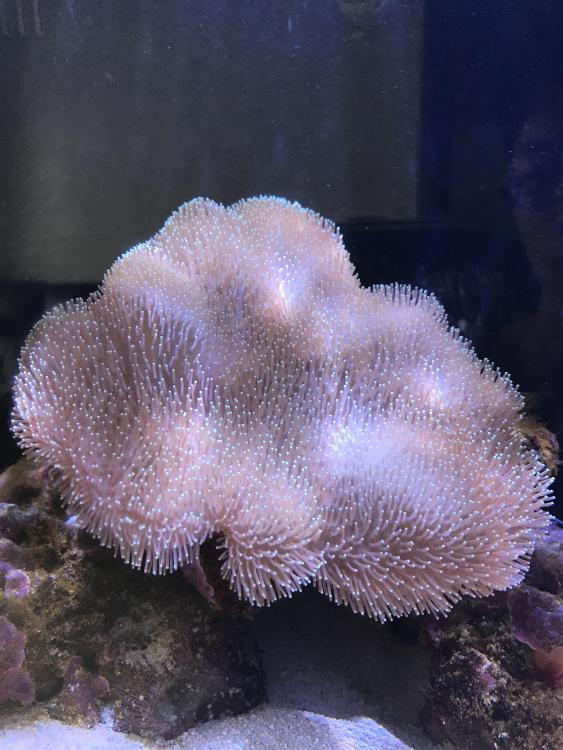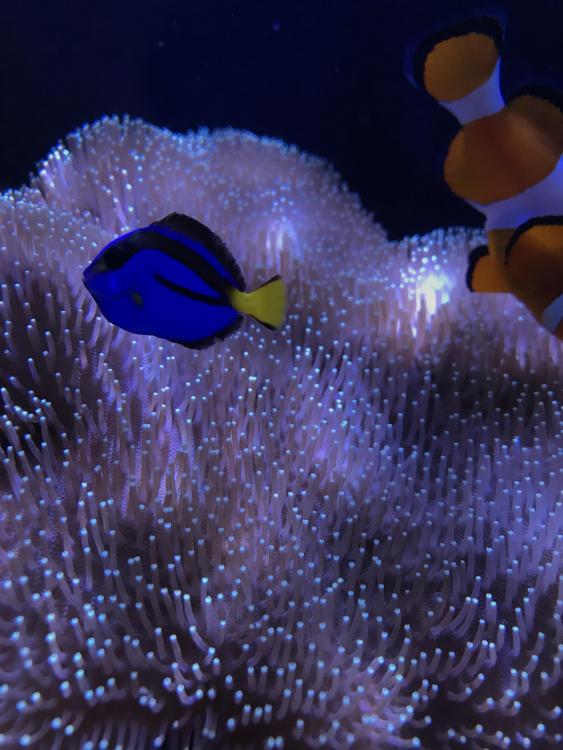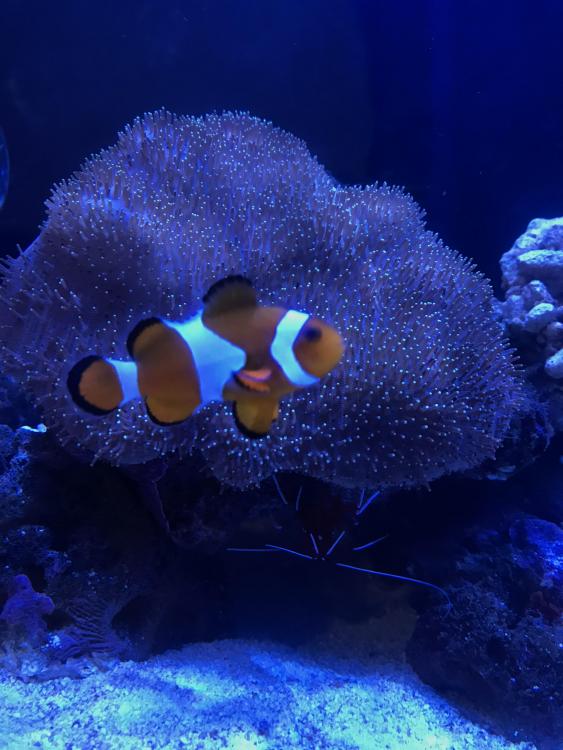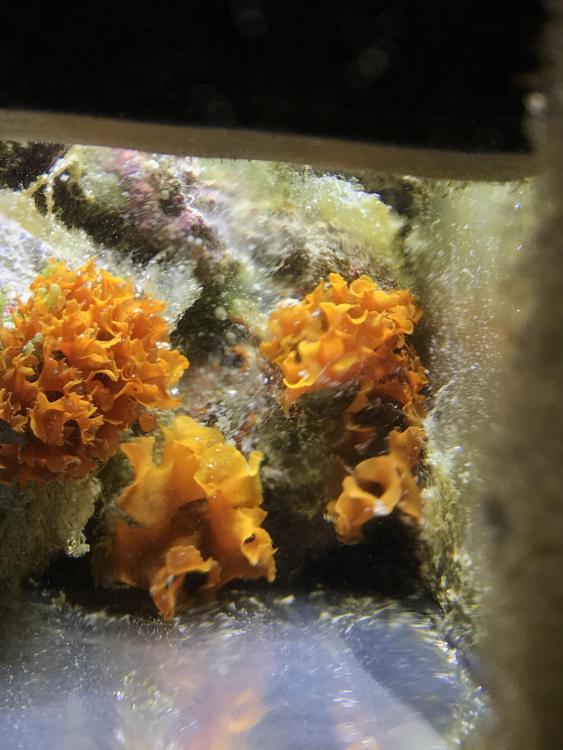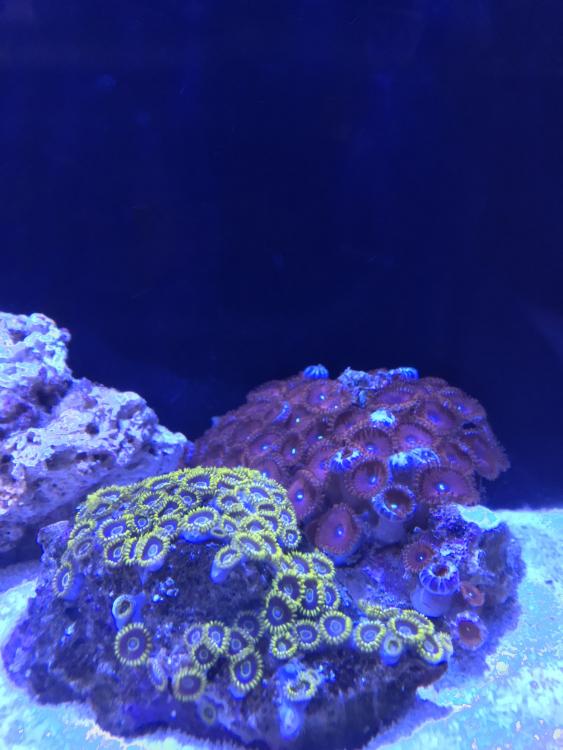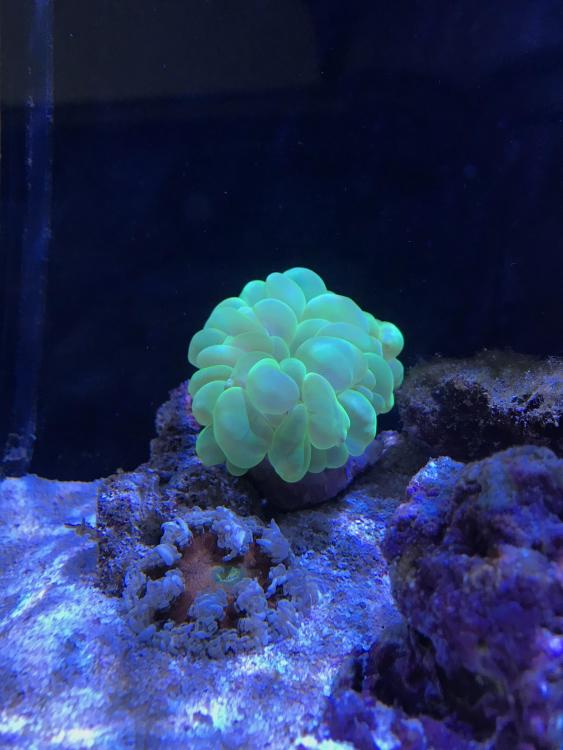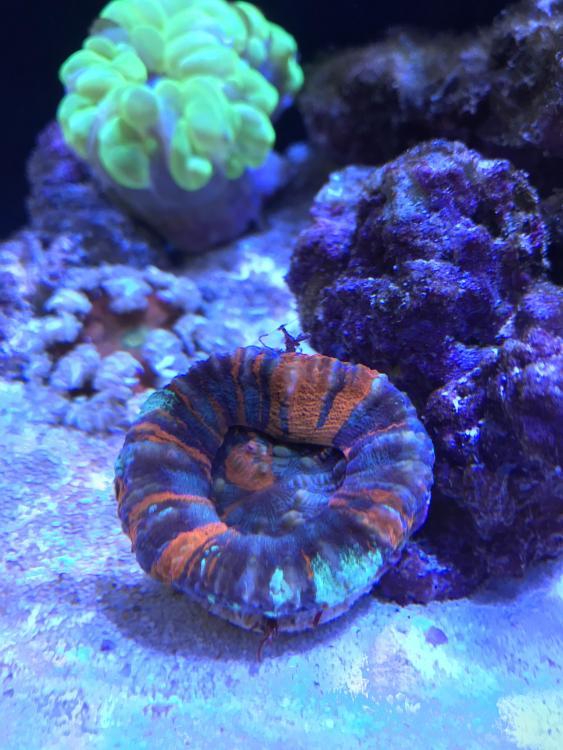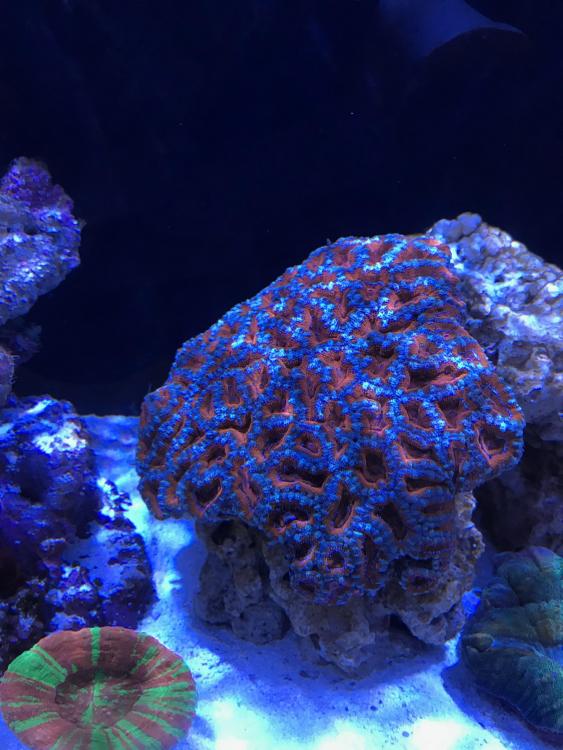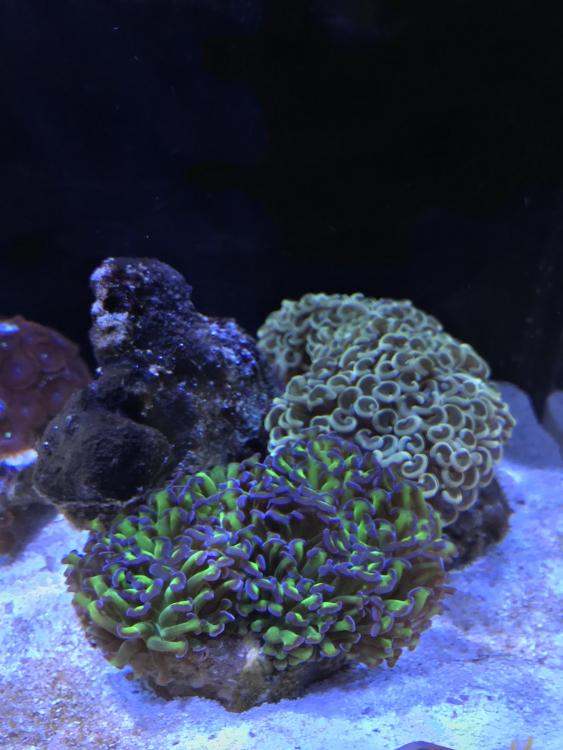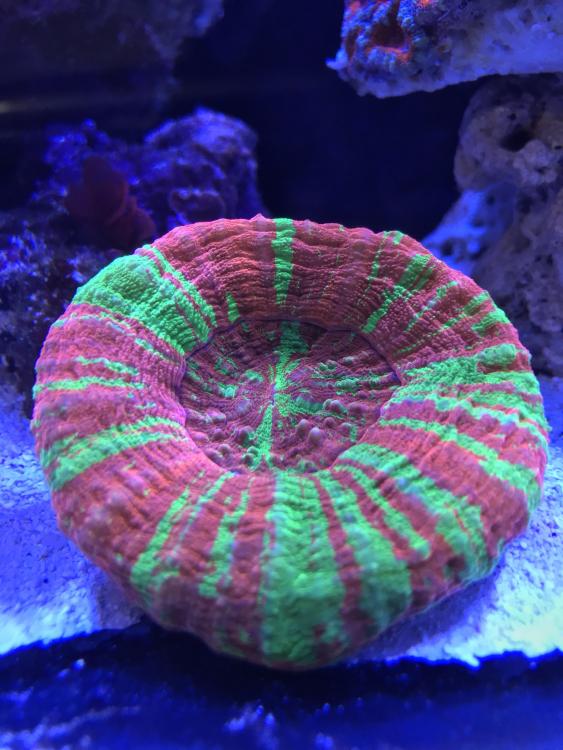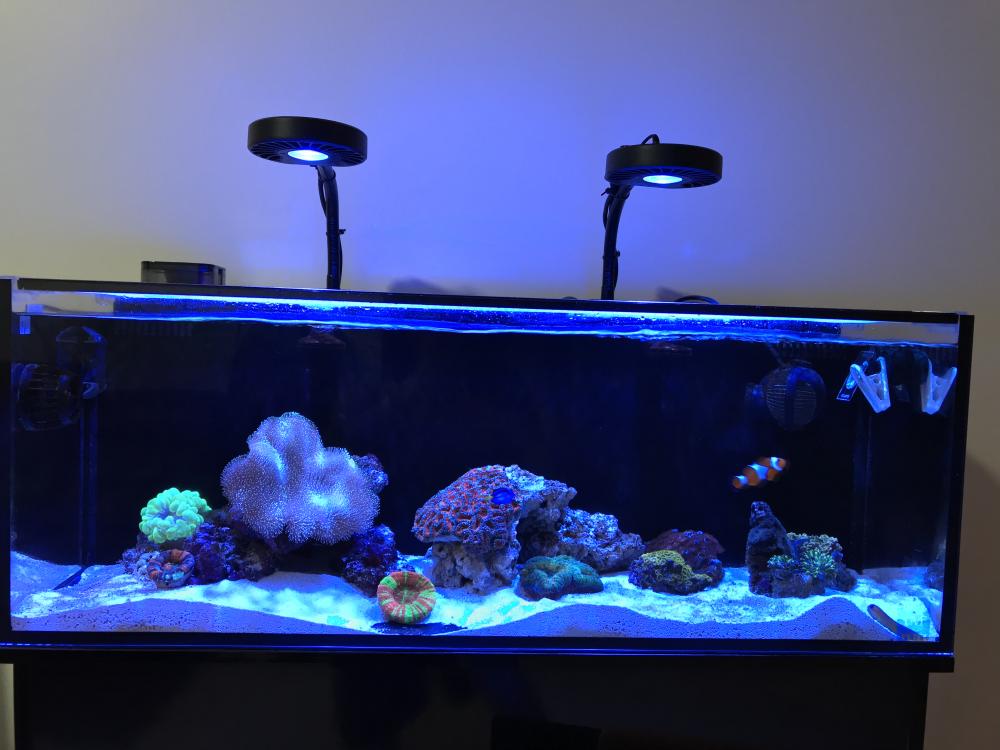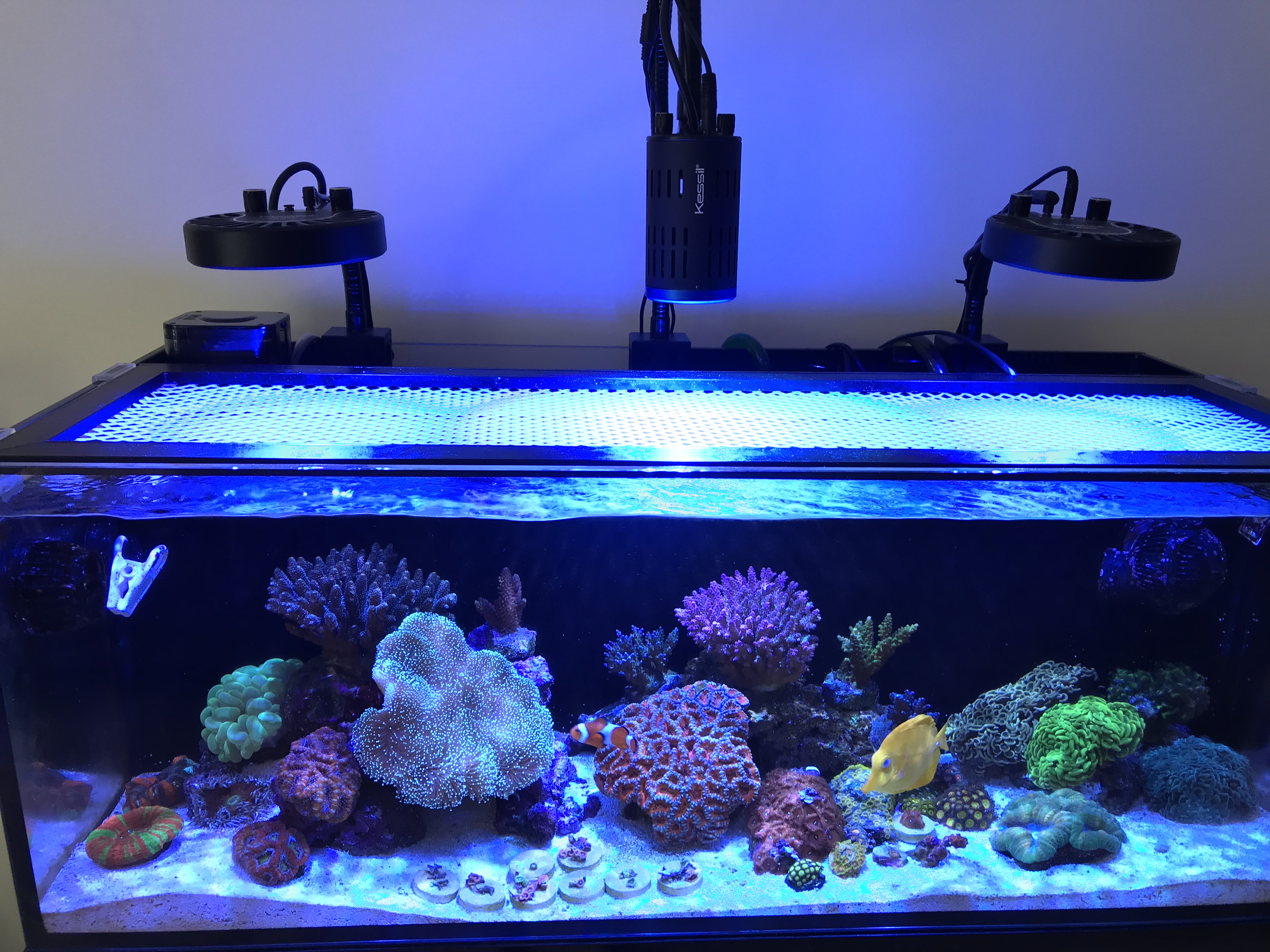
Full Hedge
SRC Member-
Posts
158 -
Joined
-
Last visited
-
Days Won
5
Content Type
Profiles
Forums
Gallery
Everything posted by Full Hedge
-
This one not large frag plug is frag disk. Easier put on sand cuz my sand layer not thick. I got mine from seasonal. But quite a few lfs have it.
-
I stopped using aminos and reef energy A. Getting better colouration. My kit kat acro (acropora abrotanoides) developing green on the tips. Nitrates consistently 0. Phosphates <0.03
-
Zoa update: blue hornets and Sunny D growing very fast. Took a frag of red ppl eater. Tbh red ppl look nicer on frag disk than a colony on rock And broke up the lunar eclipse colony Got some new additions too
-
Yeah will be fine but detritus tends to build up faster. Run a skimmer, refugium and carbon dosing. Dose a detritivorous bacteria too, biomate from KZ.
-
I dont run mechanical filtration. Nitrates consistently 0 and phosphates <0.03ppm. But I do use it temporarily, like for one day, if I stir up the sand bed. If you wish to rely on mechanical filtration as an export mechanism, need change frequently, every few days. New roller mat filters sound good, maybe try that if you have the space.
-
When we view corals we should not just be thinking of coral. What do i mean? You should be viewing it as the coral holobiont. To me that includes, the coral itself, the zooxanthellae AND the whole host of bacteria living in the coral(mucus, tissue) Why are corals interesting. Well, they live in really nutrient poor environments. Think of it like a desert. So how Do corals get the nutrition they need to even survive. Let alone thrive. Corals are the ultimate nitrogen conserving organisms. Meaning what nitrogen they get, they keep. Corals host bacteria, in addition to the zooxanthellae. The bacteria helps the coral ‘eat’ their poop. So zoox and coral share a mutualistic relationship. We know that. But mutualistic relationships range from mutualism in one environment to parasitism in another. There are models based on cost benefit analysis for understanding and quantifying the relationship status (happily married to cheating) To illustrate Corals control the amount of nitrogen provided to the zoox and Zooxanthellae has been shown to be capable of uptaking dissolved inorganic nitrogen. However, higher dissolved inorganic nitrogen has been shown to have a negative effect on coral calcification. Heterotrophic feeding of corals has been shown to increase growth rates. The opposite with adding Dissolved inorganic nitrogen(nitrate, ammonia) Pouring KNO3, probably a poor idea. Look, you are the benevolent tyrant of the reef tank. You wanna favor the coral host not the zooxanthellae. Feed your coral host. If the coral controls both sex and finances, the zoox is less likely to cheat. Basically when the environment change, the terms of trade change. Like inflation in an economy. Theres a winner (debtor), theres a loser(creditor). Just one caveat. The nutrient enriched water(nitrogen rich) effect on coral growth only applicable in environments of high light (200micromol/M^2). Under less intense light, nitrogen may not be the limiting factor. I tried to write this as simpleeee as possible. Just to share the perspective Feel free to ask me anything.
-
Ok i figured a way Assume that the carbon from the biopellet is incorporated into the bacterial biomass. Then measure the weight of a sample of used biopellet and set a sample average of unused biopellet as a baseline benchmark. Can verify the method by collecting data and seeing if the assumption is valid. More importantly is to have a measure of relative change. Another method is to go the chemical route. Possibly by measuring the amount of nitrogen in a sample of biopellet. Biopellet is hydroxylalkanoate. Doesnt contain nitrogen. Nitrogen can be inferred to be from the bacterial biomass. But interferes with the population and I havent figured how Im going to do that.
-
I need to add that my perspective might be wrong. If bacteria growth is the key mechanism what i may need to be looking at is finding the optimal bacterial population size to maximise the growth(export speed). So considering disturbance rate, intraspecific competition and carrying capacity rather than looking at interspecific competition. A more holistic view should consider both. Carrying capacity is dynamic especially since I am still adding fish. Intraspecific competition, I am less worried about since it should not change too much when expressed as a product of the population. Or to express it mathematically that way might be the wrong approach. One based of limiting factors may be better. A side note, I need to develop a method to guage the bacterial population. Standardised or random sampling of substrate(biopellet) under microscope is one but impractical for me. Suggestions?
-
I run my filtration system based on promoting heterotrophic bacteria growth to outcompete algae via stoichiometric manipulation of nutrient levels( carbon dosing). Nitrates are 0ppm and phosphates less than 0.03ppm, consistently. However, I do have brown film algae (low biomass (However relative abundance may be important and is an unknown) but positive rate of increase, about 10cm^2 per day) growing on my tank walls that I regularly remove and hair algae (low biomass, 0 or negative rate of change). The aim is for me is to eliminate algae via competitive exclusion and hence the need to clean my glass. So I have a few strategies. Looking at the Lotka-volterra model for interspecific competition, a high rival population will exert greater interspecific competition. If I have a high bacterial population and low algae population the bacteria should be exerting a large effect on the algae population, also considering for the fact that rate of change of algae population is low due to low population and high competition coefficient(since they are competing for the same nutrients that limit growth). However another note is that the bacteria may reach its carrying capacity very fast. If the bacteria biomass does not increase, the nutrient export mechanism halts and algae will uptake the remaining nutrient and grow. I doubt this because I do not notice much bacteria biofilm when i shake the media bag to dislodge the bacteria. Hence, I do not believe the bacteria has reached its carrying capacity. An improvement to the strategy may be to reduce disturbance rate and allow for bacteria biofilm to build up more significantly and only gently shake it. Hence exerting a larger competitive force on the algae population thus keeping their rate of increase lower. Side note: While rate of change of algae biomass may be 0, it may not dip below 0 if the algae is adept at uptaking nutrients in a low nutrient environment. This is what i suspect. Also need to consider the functional response of the bacteria and algae. If there is a different functional response it will result in a changing competition coefficient according to nutrient level. Hence may end up with the algae thriving at low nutient levels. Background to that thought: I did a simple experiment with a bacterial additive to investigate whether bacteria can reduce nitrate levels. Consist of 3 set ups and a control (tank saltwater). Set up 1 consist of bacteria and tank saltwater, set up 2 consist of bacteria, saltwater and one carbon pellet, set up 3(high availability of carbon)!consist of bacteria, saltwater and 10 carbon pellets. Set up 1 and control had the same level of nitrates. Set up 2 and 3 showed reduce nitrates. Duration of experiment, 3 days. Many flaws etc but shows that carbon and bacteria reduces nitrates. Effect of carbon alone unknown(should have created a control for that). However the key thing is that while it is a viable export method, Its effectiveness at outcompeting algae is unknown. One must consider the temporal dimension. Algae will thrive if it can uptake the nitrates in 1 day but bacteria takes 3 days. May also render the bacteria export completely useless via competitive exclusion. However, My experience and many others show it to be an effective nutrient export method. Another thought High nutrient availability reduces diversity of primary producers(plants) and mycorrhizal fungi. Likewise for plankton and algae. Perhaps, high nutrient availability in the aquarium reduce diversity of primary producers (algae and bacteria) However considering that most introduction of nutrient (nitrogen and phosphorous) is done by human intervention(feeding) rather than a continuous stream like in the ocean we should also take into account The concept of disturbance. High disturbance generally reduce the diversity in a community via dispersal/reproductive exclusion. Low disturbance like wise via competitive exclusion. Intermediate exclusion results in the highest level of diversity because it prevents both sort of exclusion. At low nutrient levels, competitive exclusion with the most efficient uptaker of nutrient. At high nutrient levels it is more complicated, I believe both can coexist in this case. So considering that I should not disturb the bacterial population. Another thought is on feeding corals at night. I am a big proponent of feeding corals, to provide them with necessary nutrition and trace elements. Feeding the corals at night with an efficient bacterial export has not resulted in any increase in algae but actually a decrease. I have also been feeding large amounts of food, reef roids, amino acids and red sea reef nutrition part A. My take is that food is broken down rapidly and ammonia/nitrogenous compounds rapidly converted to nitrates by the chemotrophic(aka nitrifying) bacteria. The heterotrophic bacterial population increases with the uptake of nitrate. However the algae cannot grow at night since light is the limiting factor. Increased bacteria population will exert a larger interspecific competitive force on the algae population. Sort of like a sucker punch approach. To end off, Im going to be measuring the algae growth, changing rate of disturbance to the bacteria and amount fed to the corals at night. I have a simple model (improved lotka volterra) for this purpose and hopefully I can improve it with simple observation/data. Im inclined to believe that reducing frequency of disturbance to bacteria population will help reduce rate of change of algae. Lets see how that goes. Assumptions and fyi I run the biopellets in a filter bag in a high flow area, not in a typical reactor. Allows me to control frequency of disturbance. I do not believe it is necessary. I am assuming that most of the dislodged bacteria from disturbance will be exported via skimming or eaten by predator( filter feeder) Side note, A population increase leads to Higher competitive force on B. Doesnt explain the mechanism and glosses over many other factors. Also needs to include a time dimension. Studying that.
-
-
I’m using the red sea reef energy part A and aquaforest amino mix. I dont target feed them but do broadcast feed reef roids with argent cyclopeeze.
-
Sunny delights are growing. See 5 new small heads. Attached are photos. Hopefully Im not crazy. Before
-
Trying out the red sea reef energy because I like red sea approach to coral nutrition. Using part A itself since I already have other amino acids. One note is my zoanthids do seem to like it. I have been observing good growth from them. Can only provide an anecdotal observation. Not sure how much is actually due to the product. On a side note, they recommend 6ml/25gal a day for ULNS. Three times the dosage for other systems. My tank has very low nitrate and phosphate levels but quite hestitant to dose that amount. Anyone used that dosage before?
-
Chill lagoon. More like the messy lagoon bah? New introduction. Kitkat acro. Some purple n green acro. A blue acro. Sunkist zoa. Hot pink zoa. Yellow mellon zoa. Blue green zoa. Lighting upgrade otw too.
-
Oh I didnt know they released a new one. It looks much thinner and better. The current one blocks abit of light but I dont notice it too much. Thanks for the suggestion.
-
-
Amino collected. Thread closed. Thanks for the interest.
-
Currently reserved.
-
Hello fellow reefers. I have a bottle of amino acids from aquaforest. 50mL. Expiry stated on bottle is 04/18. Brand new unopened. Giving it away. Please pm me. Collection potong pasir.
-
Blue Linckia that keeps dying
Full Hedge replied to alsacehendon's topic in New to the Marine Aquaria Hobby
http://www.advancedaquarist.com/2002/5/inverts When i set up my new tank I really wanted an orange starfish to call it patrick. I figured since I dont know much about starfish biology (apart from the lack of a brain. They have a complex bunch of nerves), their diet and simply looking at base rate success. Its just irresponsible to put one in. Not to mention an ammonia spike. Its okay if you remove it the instant you see it start to rot. But if it dies while you are say working. You gonna put your system at some serious risk. Not a prudent move. So if you read the article you would notice that we dont really know much about the dietry requirements and I have no idea how to practically feed ‘surface film’(whatever the heck that is) on a regular basis. Also, please look at the base rate success. A simple google search will tell you its pretty damn low (not to mention those people are actively trying to find information and probably have some experience. So the sample is already positively biased). You not going to fare any better unless you have a real advantage. Say you understand the biology of the organism(expertise) and have the capability to take care of it(capacity). Ive kept reef aquariums for 8 years and that isnt going to help me beat the base rate... A starfish dying within a week is probably not due to starvation ( Its a guess). Maybe poor acclimatization practice or a swing in water parameter. Anyway fish are generally better at homeostasis than inverts. Now dont feel too bad about yourself. I killed a starfish 8 years ago. The flesh literally tore off the body and it ‘melted’ infront of my eyes. So theres patricks blood on my hands too. But at least the death toll is gonna remain at 1. Stay objective and prudent. Cheers mate -
Very nice and clean store. Reminds me of reef depot last time. Prices are reasonable and a pretty wide selection of livestock. Managed to get sick af discount on corals so do keep a lookout on their fb page. Plus can get live boston lobster there. And their main display tank is awesome. Should go down just to see the DT. Dry good wise...other LFS have wider variety tbh. They stock deltec n schuran skimmers tho.
- 1 reply
-
- 1
-

-
So more details on the tank I currently have three fishes. A nemo thats been with me for 6 years. A baby dory. And like a pink midas blenny (lfs told me it was from the red sea) ? Thinking of adding another two fishes. A sixline wrasse is a must. A firefish or a bangai cardinal. For filtration Im using a tunze 9004 skimmer. Growing some red macro algae in the refugium. I use biopellets in a filter bag. Carbon in a filter bag too. Have like 1L of seachem matrix and 1kg of biohome. Using filter pads now. Initially decided not to use them, but I noticed detritus would build up in the return chamber. So rather have the detritus decompose on the filter pad than somewhere else. Nitrates is consistently 0. Phosphates 0.03ppm. Here is a picture of my leather coral (my favourite, although the most boring). One of my first corals and been with me for 8 years, through all horrible mistakes ( and I made ALOT). Grew about triple in size. Best 8 bucks I ever spent. This is baby dory. About an inch long. Size is deceiving. She eats alot more. And this is the old bird.
-
Hey there buddy. This is my innovative marine 30. I started it about 1.5 months ago when I moved into my new condo. When I was planning the aquarium I wanted it to look spacious, relaxing and something that exudes chill vibes while I sip my scotch. I decided to go for a lps dominant tank. I find that Lps give off relaxing vibes while Sps offers a sharper look.

